The incorrectly orientated right-bank con-rods.
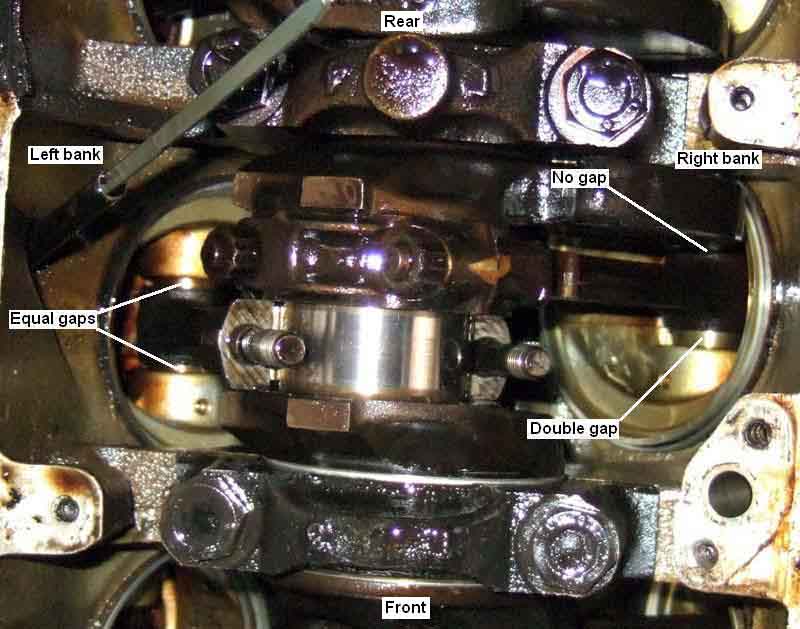
The pip and rib on each con-rod and end-cap. These must face towards the back of the engine on the left bank i.e. odd cylinders and towards the front on the right bank i.e. even numbers.
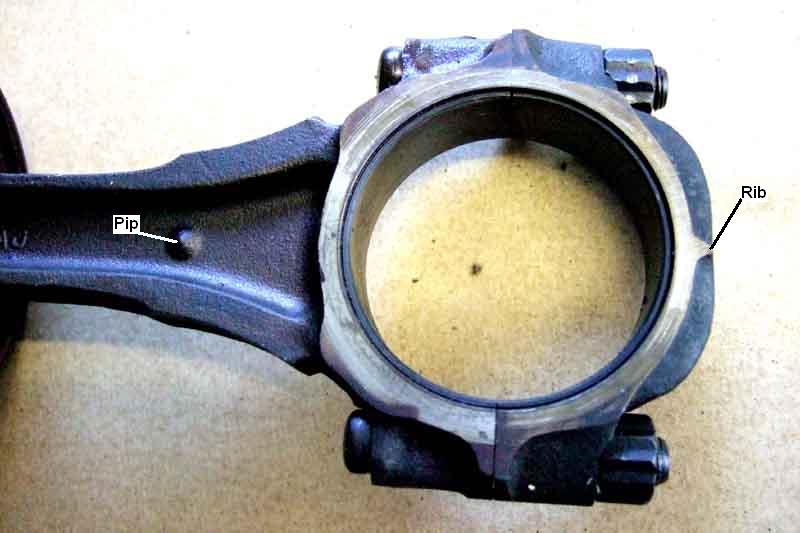
Another view of the rib on the end-cap.
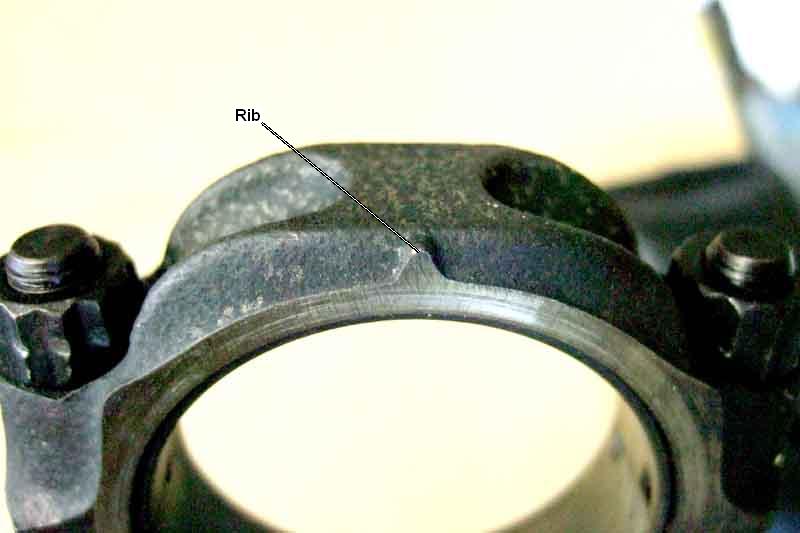
One side of the big-end is machined further than the other - B is machined more than A. The machined faces go towards each other on each pair of pistons, and have the pip and rib.

Diagram showing how the con-rods and shells are offset towards each other.
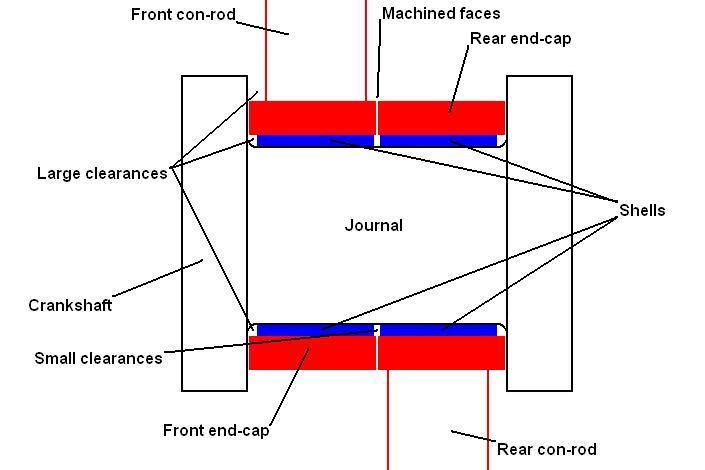

Main 1. The marking in the middle is where the oil hole is, more noticeable on this one than others for some reason. Some other scoring, possibly from debris flushed out of the passageways when first run that hadn't been removed properly in the workshop, something that has always bothered me - just how do you flush it properly? Speckling on all the bearings, not sure how or why.

Main 1 Plastigauged at about 2.4 i.e. just inside the maximum 2.5 (false colour below the Plastigauge strip to make both the strip and the journal are visible).
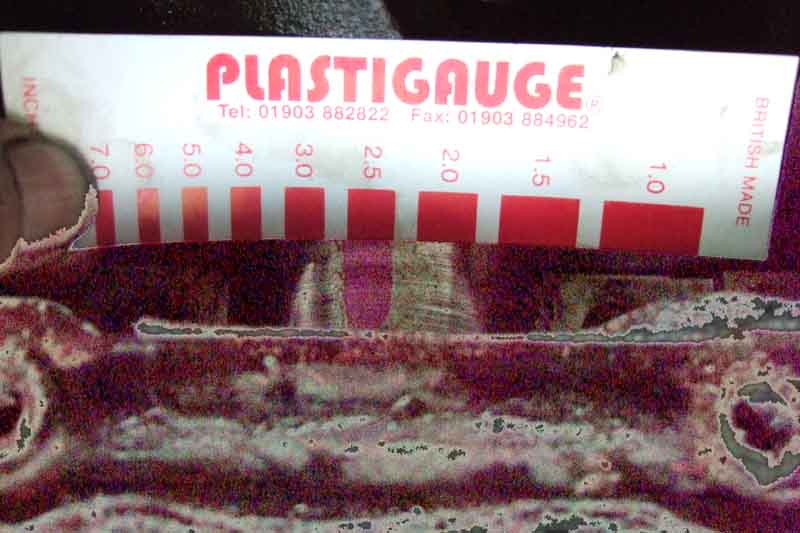
Big-end 1. Apart from the speckling I'm amazed to see it shows so little apparent signs of wear after the thick end of 100k.
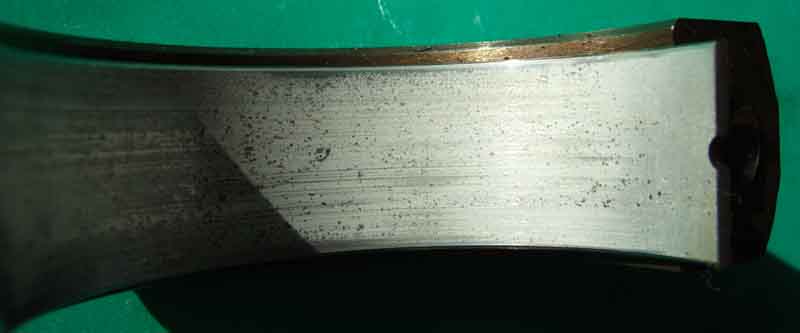
Big-end 1 Plastigauged at about 2.2, again just inside the maximum of 2.3.
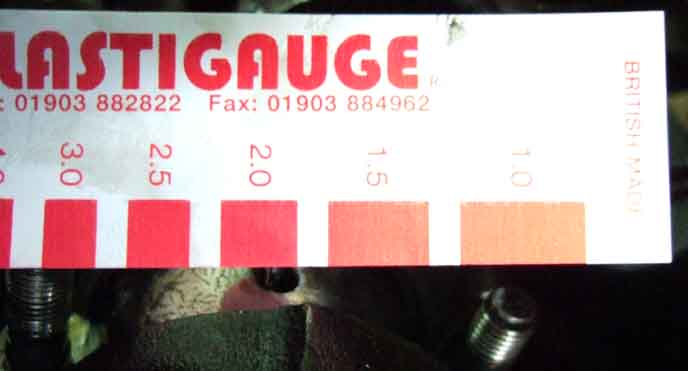
Big-end 2, a little more signs of wear down the middle but little sign elsewhere except for chamfering of the top edge, which I now know to have been caused by the con-rods and shells being on the journals the wrong way round. Nicely inside at 2.0.
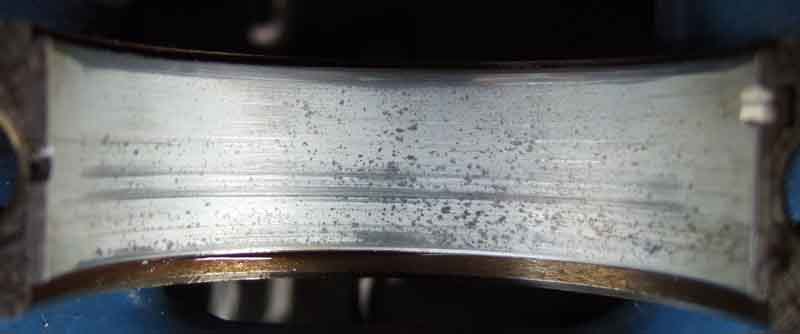
Main 2 is 2.0, again nicely inside. This is big-end 3 at 2.2 ...
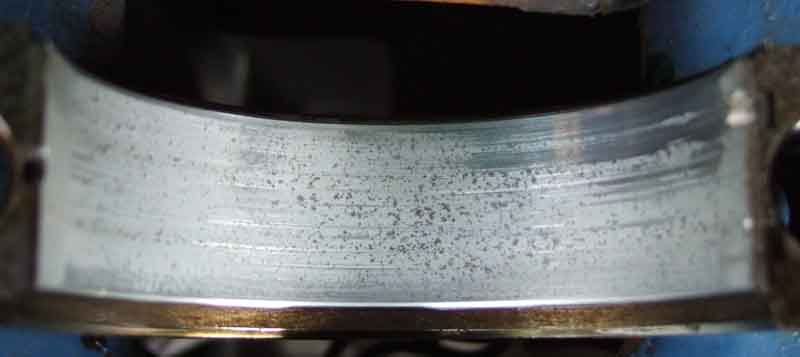
... and its journal - perfect, looks newly ground!
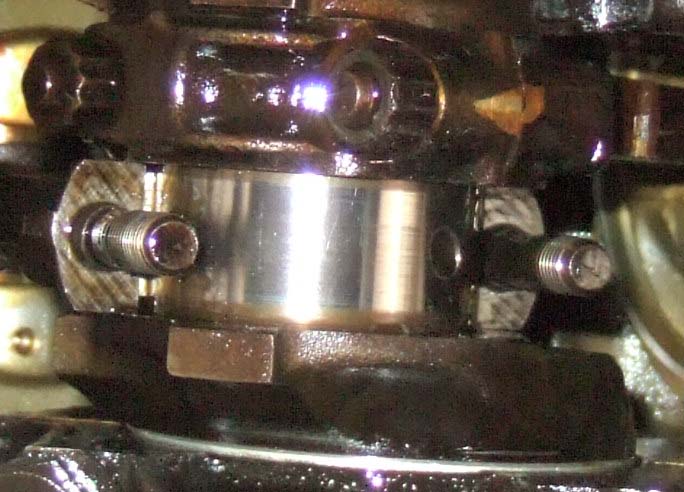
Big-end 4 at 2.0, again so little wear except the chamfering on the top edge from being the wrong way round.
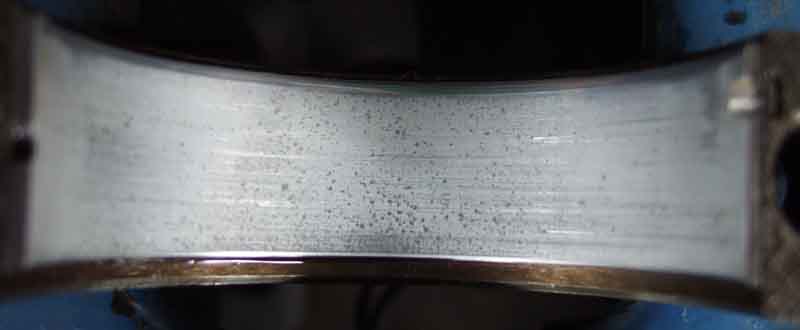
Centre main 3 at 2.5, right on the upper limit.

Big-end 5 was 2.0 again, this is big-end 6 at 2.1.
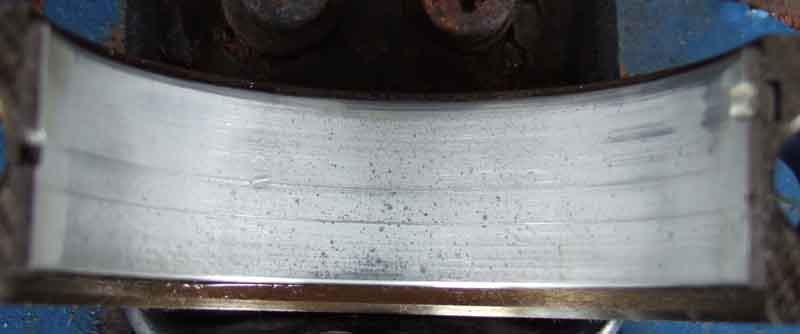
Main 4, the same scuffing as the others, at 2.4 just inside the upper limit.

Big-end 7 at 1.8, the smallest clearance of all.
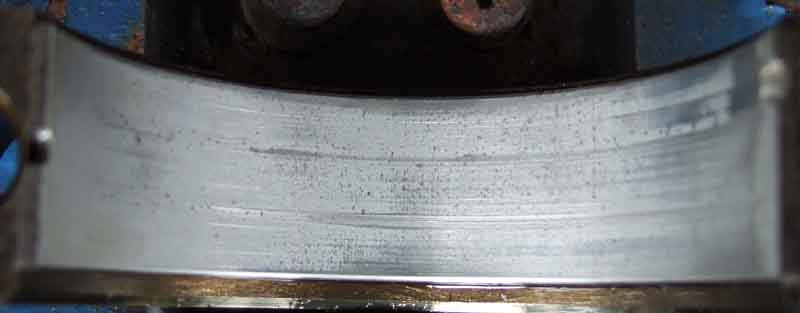
Big-end 8 at 2.1.
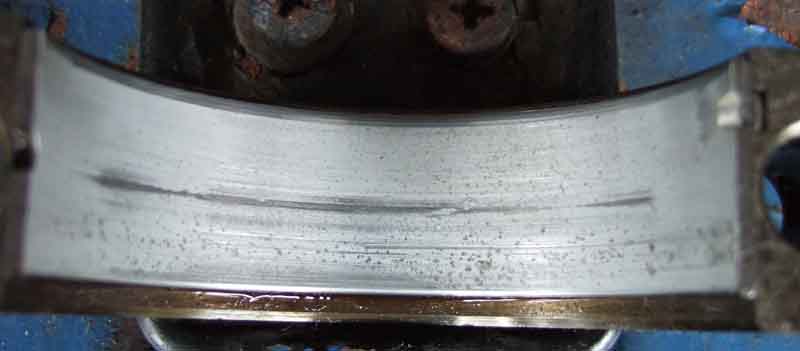
Didn't remove the rear main as it is so closely tied up with the rear crank seal. Given the relative consistency of the others I'm hoping it is the same.
